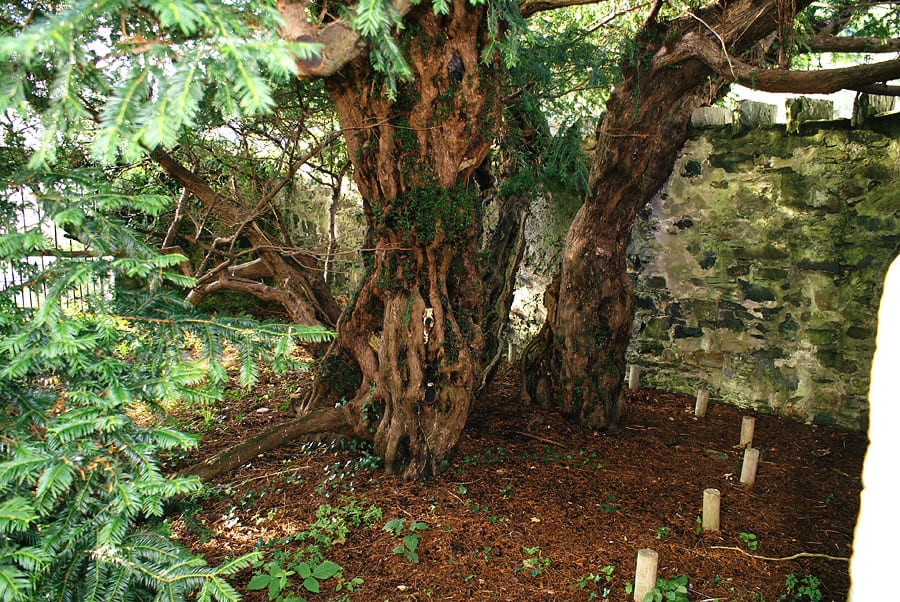An ancient tree in Scotland is under attack — by the tourists who can’t keep their damn hands off of it.
The Fortingall Yew may be the oldest living organism in Britain. Some say it is as many as 5000 years old, though other experts say the tree may be as young as 2000. Either way, it’s an impressively old tree.
The tree is a European yew, and they are well-adapted to staying alive for ages. This species easily lives to 600 years of age. As they get older, the interior heartwood decays to lighten their burden. They also develop new shoots low on their trunks.

Photo Credit: Wikimedia Commons
Sadly, this particular yew’s fame may turn out to be its downfall. Visitors to the tree often want to walk away with a souvenir, so they snip branches and twigs off of it.
The Fortingall Yew has apparently been enduring abuse for a long time.
“People have been unkind to the tree for centuries,” Catherine Lloyd, coordinator of the Tayside Biodiversity Community Partnership, tells Atlas Obscura.
But just because it’s managed to survive so far doesn’t make the Fortingall Yew invincible.

Photo Credit: Wikimedia Commons
This habit of cutting away parts of the tree is new, though, and it’s having a clear impact. Catherine says, “The tree does appear to be stressed.”
In response to the stress, the tree has begun to change sex. It is displaying female characteristics after thousands of years of life as a male tree.
Catherine says the tree is not in any immediate danger of dying, but it’s also not clear just how stressed it is. Some media outlets say it may only have decades left to live.
It would be best to “nurture it and give it space,” according to Catherine.
In other words: Back off, tourists!






